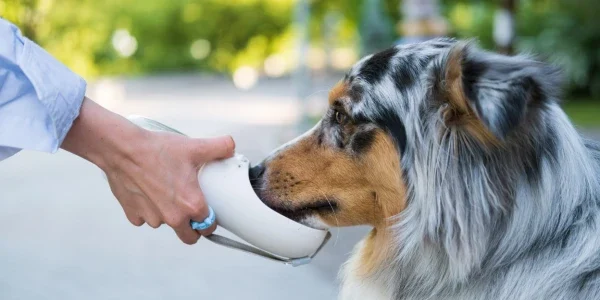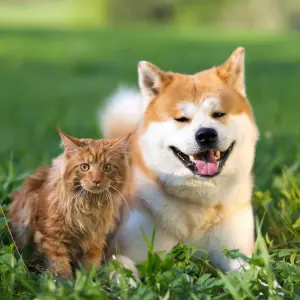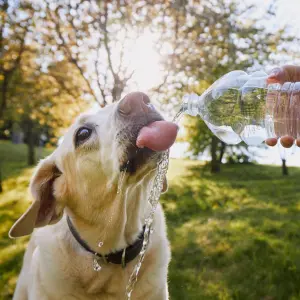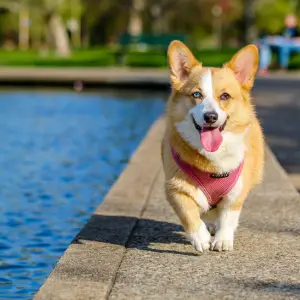Signs of Dehydration in Pets
Proper hydration is crucial for the overall health and well-being of our beloved pets. As pet owners, it’s essential to understand the signs of dehydration and take prompt action to address this condition. In this article, we’ll explore the importance of recognizing dehydration in pets, discuss common signs to look out for, and provide practical insights for maintaining optimal hydration. By understanding the signs of dehydration, you can take proactive measures to ensure your pet’s well-being.

The Importance of Recognizing Dehydration in Pets
Early detection and intervention in cases of dehydration are critical for the well-being of our pets. Dehydration can lead to serious health consequences, including organ damage, heatstroke, urinary issues, and overall compromised health. By recognizing the signs of dehydration, we can take timely action to prevent further complications and provide the necessary care.
Dehydration occurs when a pet’s body experiences an inadequate level of fluids. This can result from various causes, including inadequate water intake, excessive heat exposure, illness, vomiting, diarrhea, and other factors that contribute to fluid loss. Understanding these causes helps us identify potential risk factors and take preventive measures to avoid dehydration.
Certain factors may increase a pet’s vulnerability to dehydration. Age, breed, outdoor activities, underlying health conditions, and medications can impact hydration needs. It’s important to be aware of these factors and monitor our pets accordingly to ensure they receive adequate hydration.
Signs of Dehydration in Pets
Dehydration in pets can have serious consequences on their health and well-being. It’s important to recognize the signs of dehydration early to take prompt action. Here are some key signs to look out for:
Physical Signs
- Sunken Eyes: When a pet is dehydrated, their eyes may appear sunken or have a hollow look. This is due to the loss of fluids and can be observed by comparing their eyes to their normal appearance.
- Dry Mouth: Dehydrated pets may have a dry and sticky mouth. The gums may appear dry and pale instead of the healthy pink color they should be. Lack of saliva production is a common indicator of dehydration.
- Loss of Skin Elasticity: One way to test for dehydration is by gently pinching the skin on the back of the pet’s neck or between their shoulder blades. If the skin takes longer to return to its original position or forms a tent-like shape, it suggests dehydration. In properly hydrated pets, the skin quickly snaps back into place.
- Reduced Urine Output: Dehydration can result in decreased urine production. You may notice that your pet is urinating less frequently or that their urine is more concentrated and darker in color.
Behavioral Changes
- Lethargy: Dehydrated pets often become lethargic and lack energy. They may appear weak, have difficulty moving, or show a lack of interest in activities they normally enjoy. This is due to the body conserving energy in response to the fluid imbalance.
- Increased Panting: Dogs, in particular, may exhibit excessive panting as a way to cool themselves down when they are dehydrated. Panting helps to release heat, but it can also result in further fluid loss if not addressed promptly.
- Decreased Appetite: Dehydration can lead to a reduced appetite in pets. They may show disinterest in their food or exhibit only partial eating. This can contribute to further fluid loss and exacerbate the dehydration.
- Reduced Interest in Activities: Dehydrated pets may display a lack of interest in their usual activities or playtime. They may seem less engaged, reluctant to move or interact, and may seek out cool places to lie down or rest.
Additional Symptoms
In severe cases of dehydration, pets may exhibit more severe symptoms that require immediate veterinary attention. These symptoms include:
- Rapid Heartbeat: Dehydrated pets may have an elevated heart rate as their body tries to compensate for the fluid loss. You may notice a noticeably faster or irregular heartbeat when you feel their chest.
- Dizziness and Weakness: Pets experiencing severe dehydration may appear dizzy, unsteady on their feet, or have difficulty maintaining balance. They may exhibit weakness in their legs and struggle to walk or stand.
- Collapse: In extreme cases, dehydration can lead to collapse or fainting. If your pet collapses or loses consciousness, it is crucial to seek emergency veterinary care immediately.
If you notice any of these signs of dehydration in your pet, it’s important to take action promptly. Mild cases of dehydration can sometimes be managed at home, but moderate to severe dehydration requires veterinary attention for proper diagnosis and treatment. Contact your veterinarian for guidance and follow their recommendations to ensure the well-being of your pet.
By familiarizing yourself with the signs of dehydration, you can intervene early and provide the necessary care to address this condition. Regular monitoring of your pet’s hydration status and taking preventive measures to promote proper hydration are key to maintaining their overall health and well-being.
Addressing Dehydration in Pets:
Encouraging our pets to drink more water is key to maintaining proper hydration. Providing clean and fresh water at all times, offering multiple water stations, and considering water fountains or running water sources can help stimulate their interest in drinking and promote adequate hydration.
For mild cases of dehydration, there are some home remedies that can help. Offering electrolyte solutions, diluted low sodium chicken broth, or ice cubes can assist in rehydration. However, it’s important to seek veterinary assistance for moderate to severe cases, as professional intervention and fluid administration may be necessary.
Electrolyte solutions are specially formulated to replenish the fluids and essential electrolytes lost during dehydration. These solutions are available at veterinary clinics or pet supply stores. Follow the instructions provided by your veterinarian or the product packaging for proper dosage and administration.
Electrolyte solutions are particularly beneficial for pets experiencing mild to moderate dehydration. Administering small amounts of the solution orally using a syringe or a dropper can help replenish the lost fluids and electrolytes. It’s essential to consult your veterinarian before administering electrolyte solutions to ensure correct dosage and to rule out any underlying health conditions.
For pets experiencing mild dehydration, offering ice cubes made from water or low-sodium broth can be an effective way to provide fluids. Many pets find ice cubes intriguing and may lick or chew on them, which can help replenish some of the lost fluids. Additionally, ice chips can be placed in a pet’s water bowl to make the water more enticing and refreshing.
Remember to monitor your pet closely when offering ice cubes or chips to prevent choking hazards. If your pet shows interest in the ice but struggles to consume it, you can wrap the ice cube in a washcloth or place it in a mesh feeder to make it easier for them to lick or chew on.
Preventing Dehydration in Pets
Adopting proper hydration practices is crucial in preventing dehydration. Providing clean and fresh water at all times, monitoring water intake, and adjusting water availability based on environmental conditions and pet needs help ensure optimal hydration levels.
Identifying and addressing underlying health conditions that contribute to dehydration is important. Regular veterinary check-ups, prompt treatment of illnesses impacting hydration, and appropriate management of chronic conditions can significantly reduce the risk of dehydration.
Conclusion
Recognizing the signs of dehydration in our pets is essential for their well-being. By understanding the importance of hydration, familiarizing ourselves with the signs of dehydration, and taking preventive measures, we can maintain optimal hydration levels and ensure the health and happiness of our furry companions.
For more valuable information on pet care, hydration, and well-being, visit our website. Sign up for our newsletter to receive regular updates and tips on maintaining proper hydration in pets. Share this article with other pet owners to spread awareness about the signs of dehydration and the importance of hydration. Together, let’s prioritize the well-being of our beloved pets.



